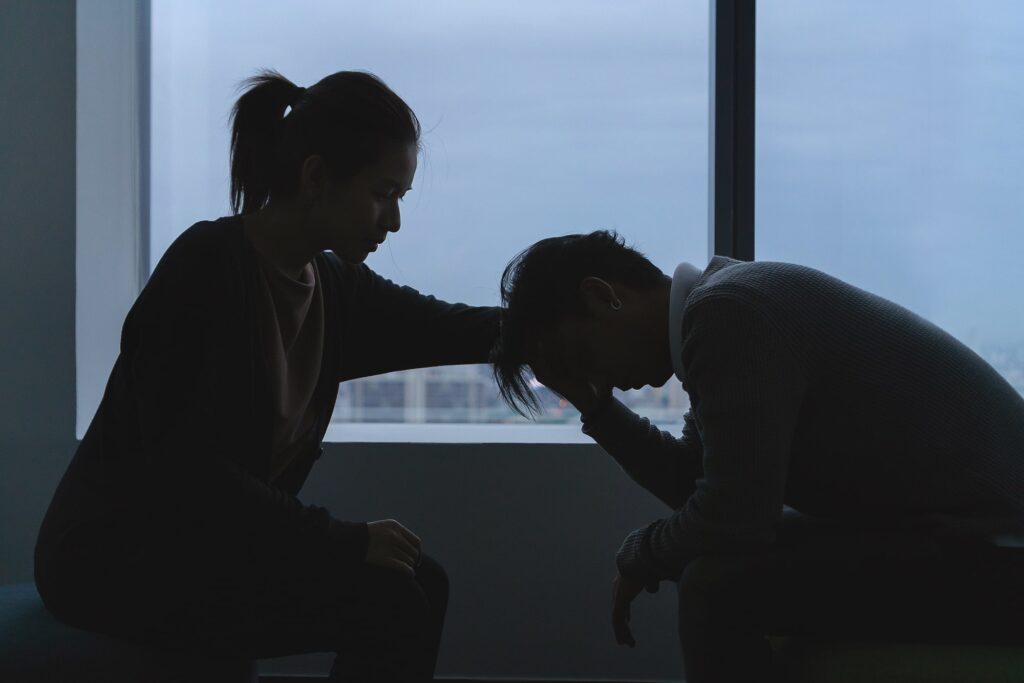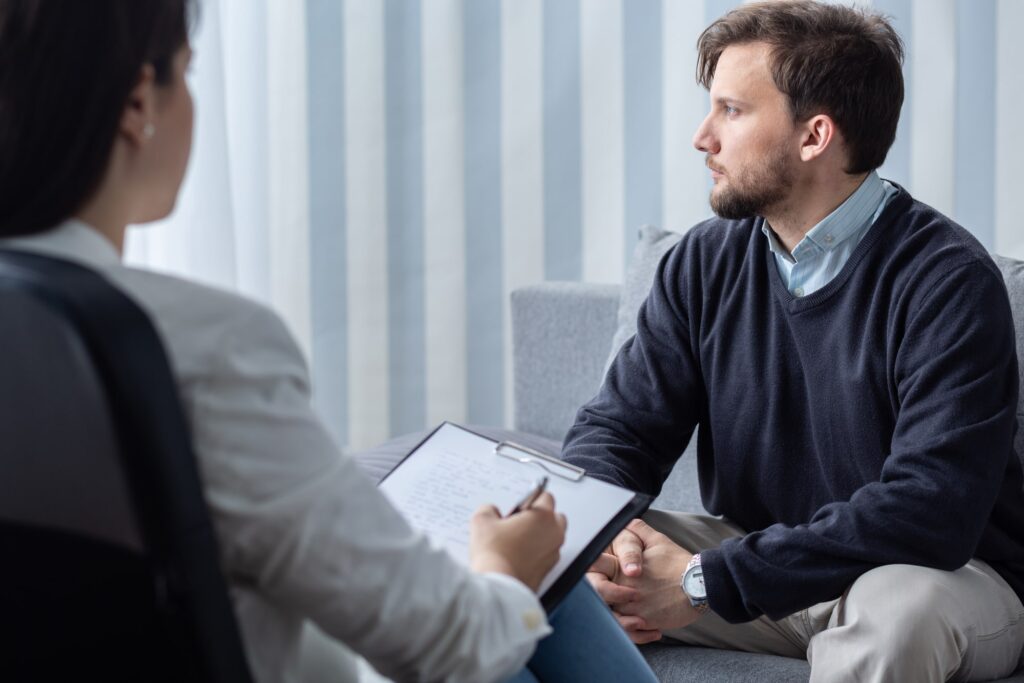Post-traumatic stress disorder (PTSD) is a complex stress-related mental health condition that can arise after experiencing or witnessing a traumatic event. From natural disasters and violent assaults to harrowing combat experiences, the triggers for PTSD are vast and varied. This guide aims to provide a holistic understanding of PTSD, shedding light on its causes, symptoms, and various treatment options.
Whether you or a loved one is grappling with this condition or simply seeking to deepen your understanding, this guide offers insights grounded in the latest research and expert recommendations.
Understanding PTSD

Post-traumatic stress disorder, commonly known as PTSD, is more than a response to a traumatic event. It’s a complex mental health condition characterized by persistent and intrusive memories, emotional distress, and heightened reactions long after the traumatic event has passed.
What is PTSD?
PTSD is a psychiatric disorder in individuals who have experienced or witnessed life-threatening events, such as natural disasters, terrorist incidents, serious accidents, or violent personal assaults. While it’s natural for anyone to feel fear during and after a traumatic event, most people naturally recover from the initial symptoms. However, those who continue to experience problems may be diagnosed with PTSD. The condition can disrupt daily life and make it hard to continue with everyday activities, affecting the individual and their loved ones.
Common Causes and Triggers of PTSD
The root of PTSD lies in traumatic events. These different types of trauma can include:
- Combat exposure
- Childhood physical or sexual abuse
- Terrorist attacks
- Sexual or physical assault
- Serious accidents, like car crashes
- Natural disasters, such as hurricanes or earthquakes
It’s essential to note that not everyone who experiences these events will develop PTSD. Personal risk factors, such as previous traumatic exposure, age, and gender, can influence whether a person will develop PTSD.
How PTSD Affects Individuals

The impact of PTSD can be profound. Individuals with PTSD may relive the event through flashbacks or nightmares. They might also feel sadness, fear, or anger and become detached from others. People with PTSD may avoid situations or people that remind them of the traumatic event, and they may have strong adverse reactions to something as ordinary as a loud noise or an accidental touch.
Symptoms of PTSD
The manifestations of PTSD can be physical and psychological, often intruding into an individual’s daily life and affecting their ability to function normally. These PTSD symptoms can be grouped into four main categories: re-experiencing, avoidance, negative changes in beliefs and feelings, and hyperarousal.
Recognizing the Signs
The most common signs of PTSD, also referred to as the four stages of PTSD, include:
- Re-experiencing the trauma: This can be in the form of flashbacks, nightmares, or frightening thoughts. An individual might relive the trauma repeatedly, often triggered by reminders or seemingly unrelated events.
- Avoidance: Individuals might steer clear of places, events, or objects that are reminders of the traumatic experience. They may also avoid talking or thinking about the event.
- Negative changes in thinking and mood: Feelings of detachment from family and friends, lack of interest in activities, and negative beliefs about oneself or others are common. There might also be an inability to experience positive emotions.
- Changes in emotional reactions: This includes being easily startled, feeling tense, having difficulty sleeping, or experiencing angry outbursts.
If you notice these signs and symptoms of PTSD in yourself or a loved one, it’s imperative to seek treatment.
PTSD in Different Populations

While PTSD can affect anyone, certain populations may have unique experiences or be at higher risk:
- Children: Young minds are especially vulnerable to traumatic events. Children with PTSD might wet the bed, forget how to talk or act out the trauma during play. They might also exhibit fear of being separated from a parent. Additionally, they may struggle to articulate their feelings, leading to behavioral changes such as increased aggression or withdrawal from social interactions.
- Veterans: Due to the nature of their job, military personnel often face traumatic events that can lead to PTSD. Their military experience might influence their symptoms, making it different from PTSD in civilians. The camaraderie and brotherhood in the military can sometimes make it challenging for veterans to seek help, as they might feel they’re betraying their comrades or showing weakness.
- First Responders: Police, firefighters, and emergency medical professionals often witness traumatic events. They might experience feelings of numbness, irritability or become distant from loved ones. Repeated exposure to trauma can lead to “compassion fatigue,” where they become indifferent to the suffering they witness as a coping mechanism.
Understanding the unique challenges these populations face can aid in providing tailored support and treatment, ensuring they receive the care they deserve.
Available Treatments for PTSD
Living with PTSD can be challenging, but it’s important to remember that it’s treatable. Over the years, various treatments have been developed and refined to help individuals cope with and overcome the symptoms of PTSD. These treatments range from traditional talk therapies to medications and alternative approaches. The key is to find the right combination that works for the individual.
Talk Therapies for PTSD

Talk therapies, also known as psychotherapies, involve talking with a mental health professional to treat emotional and mental disorders. For PTSD, several types of talk therapies have proven effective:
Cognitive Behavioral Therapy (CBT)
CBT is one of the most effective treatments for PTSD. It involves recognizing and changing negative thought patterns and behaviors. Through CBT, individuals learn to challenge and modify harmful beliefs related to their trauma. This therapy can be done individually or in a group setting.
Prolonged Exposure Therapy
This therapy involves confronting and gradually facing the traumatic memories and feelings associated with the event. Over time, the individual becomes less sensitive to these memories, reducing the power they hold. It’s a step-by-step approach, ensuring the person feels safe and in control.
Eye-Movement Desensitization and Reprocessing (EMDR)
EMDR combines exposure therapy with guided eye movements. This process helps individuals process traumatic memories and change their reactions to them. The guided eye movements are believed to aid in the processing of memories, making them less distressing.
Medications Used in PTSD Treatment
Medications can be essential to PTSD treatment, especially when combined with talk therapies. Some of the commonly prescribed medications include:
- Antidepressants: These can help control PTSD symptoms such as sadness, worry, anger, and feeling numb. Examples include Prozac, Zoloft, and Paxil.
- Anti-anxiety medications: These can help relieve the stress and anxiety caused by PTSD. However, they are usually prescribed for short periods as they can be habit-forming.
- Prazosin: Originally used to treat high blood pressure, Prazosin has effectively reduced sleep problems and nightmares in PTSD patients.
Alternative and Complementary Therapies

Beyond traditional treatments, many individuals with PTSD have found relief through alternative and complementary therapies. These include:
- Meditation and Mindfulness: These practices focus on the present moment, helping individuals become more aware of their thoughts and feelings without becoming overwhelmed.
- Yoga: Combining physical postures, breathing exercises, and meditation, yoga can help individuals reconnect with their bodies and calm their minds.
- Adventure Therapy: This therapy aims to challenge clients mentally, helping them overcome issues and practice mindfulness in a supportive and natural environment.
How to Choose the Right PTSD Treatment
Choosing the right treatment for PTSD can be daunting, but it’s crucial for recovery.
Selecting the most suitable treatment for PTSD is a pivotal step toward recovery. The right approach can significantly improve one’s quality of life, while an ill-fitted method might lead to discouragement or even exacerbate symptoms. It’s essential to remember that every individual’s experience with PTSD is unique, and what works for one person might not necessarily be effective for another.
Factors to Consider
Several factors should be considered when deciding on the best treatment for PTSD. These factors include:
- The Severity of Symptoms: The intensity and type of PTSD symptoms can guide the treatment choice. For instance, someone with severe anxiety might benefit more from anti-anxiety medications or specific therapies targeting anxiety.
- Co-existing Health Conditions: If an individual has other health conditions, such as depression, substance abuse, or chronic pain, it’s crucial to choose a treatment that addresses all health concerns simultaneously.
- Previous Treatment Experiences: If someone has tried a particular therapy or medication without success, they might want to explore alternative options or a combination of treatments.
- Personal Preferences: Some individuals might be more inclined towards talk therapies, while others might prefer medication or alternative treatments. It’s essential to consider personal comfort and beliefs.
- Availability and Accessibility: Ensure that the chosen treatment is readily available. Consider factors like the location of the therapist or clinic, the frequency of sessions, and the overall duration of the treatment.
Importance of Personalized Treatment Plans

A one-size-fits-all approach rarely works for PTSD. Personalized treatment plans, tailored to an individual’s unique experiences, symptoms, and needs, often yield the best results. Here’s why:
- Addresses Individual Needs: Personalized plans consider the specific traumas, triggers, and symptoms an individual faces, ensuring that the treatment is directly relevant to their experience.
- Flexibility: As individuals progress in their recovery journey, their needs might change. Personalized plans can be easily adjusted to accommodate these changes, ensuring effective treatment.
- Empowerment: Actively creating and adjusting one’s treatment plan can give individuals a sense of control over their recovery, fostering motivation and commitment.
Choosing the right PTSD treatment is a collaborative process that requires careful consideration, research, and consultation with healthcare professionals. With the right approach, recovery is not just possible; it’s probable.
The Importance of Seeking Help for PTSD at Transformations Treatment Center
Post-traumatic stress disorder, while challenging, is a condition that can be managed and treated with the right support and interventions. At Transformations Treatment Center, we understand the profound impact PTSD can have on an individual’s life, and we’re committed to providing comprehensive, evidence-based care to treat PTSD tailored to each person’s unique needs.
Why Choose Transformations Treatment Center?
Our team comprises seasoned professionals who specialize in trauma and PTSD. Their extensive experience ensures that patients receive care that’s both compassionate and grounded in the latest research.
- Holistic Approach: We believe in treating the whole person, not just the symptoms. Our holistic approach integrates traditional therapies with complementary treatments, ensuring that every aspect of an individual’s well-being is addressed.
- Personalized Treatment Plans: Recognizing the unique nature of each person’s experience with PTSD, we craft individualized treatment plans that cater to specific needs, challenges, and goals.
- Supportive Community: At Transformations Treatment Center, patients are welcomed into a nurturing community where they can share their experiences, learn from others, and build lasting support networks.
- State-of-the-Art Facilities: Our center is equipped with modern facilities and resources, ensuring patients can access the best therapeutic interventions available.
Take the First Step Today
Acknowledging the need for help and seeking treatment can be daunting. However, it’s crucial to healing and reclaiming one’s life. At Transformations Treatment Center, we’re here to guide and support you every step of the way. From the initial assessment to post-treatment follow-ups, our team is dedicated to ensuring that everyone receives the care, respect, and support they deserve.
In the battle against PTSD, you’re not alone. With the right help, recovery is within reach. Let Transformations Treatment Center be your partner in this journey toward healing and hope. Call us today at (800) 270-4315 to begin your journey.
- https://www.psychiatry.org/patients-families/ptsd/what-is-ptsd
- https://www.apa.org/monitor/2012/06/shell-shocked.aspx
- https://www.psychologytoday.com/us/blog/what-doesnt-kill-us/201111/is-shell-shock-the-same-ptsd
- https://www.nimh.nih.gov/health/topics/post-traumatic-stress-disorder-ptsd/index.shtml




